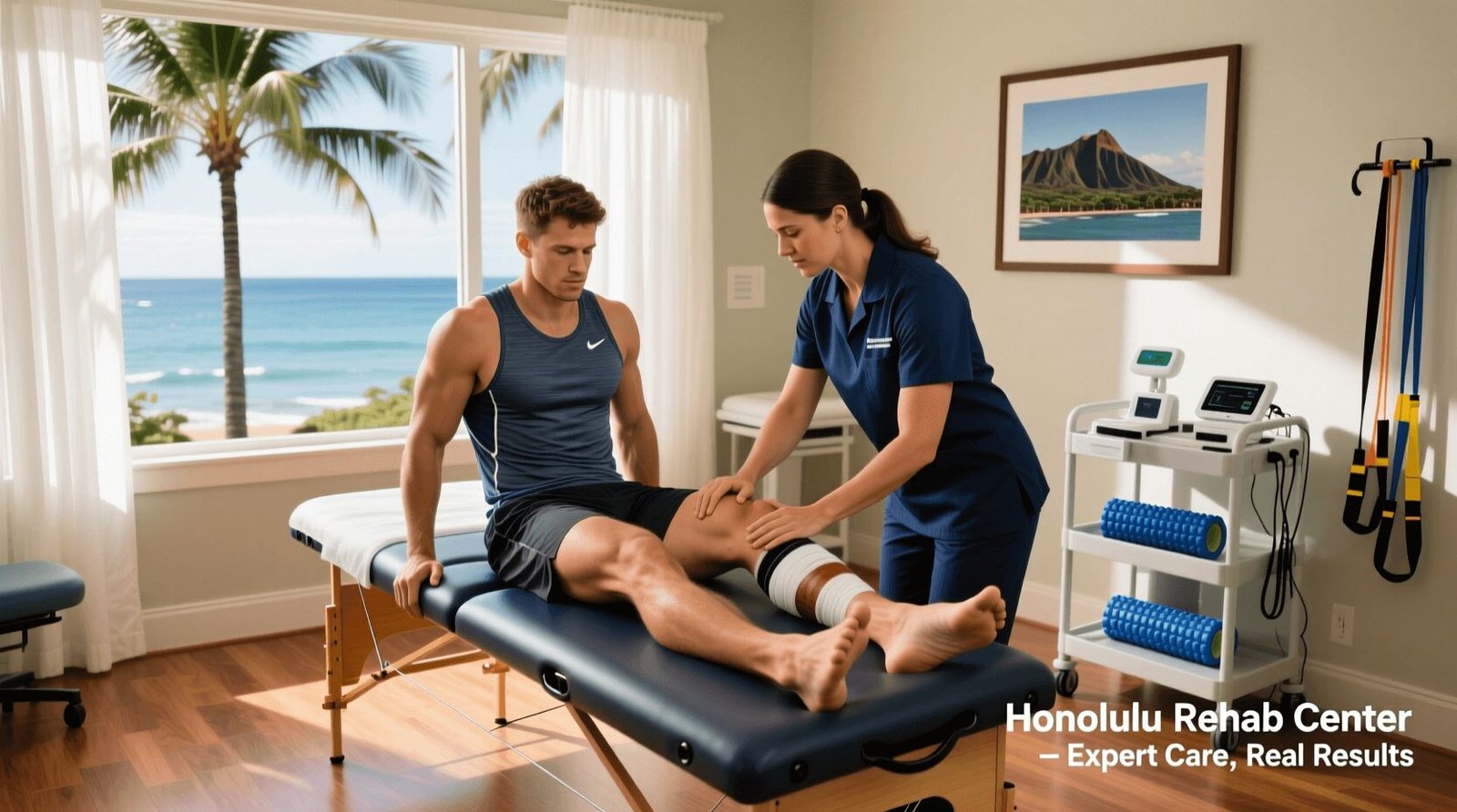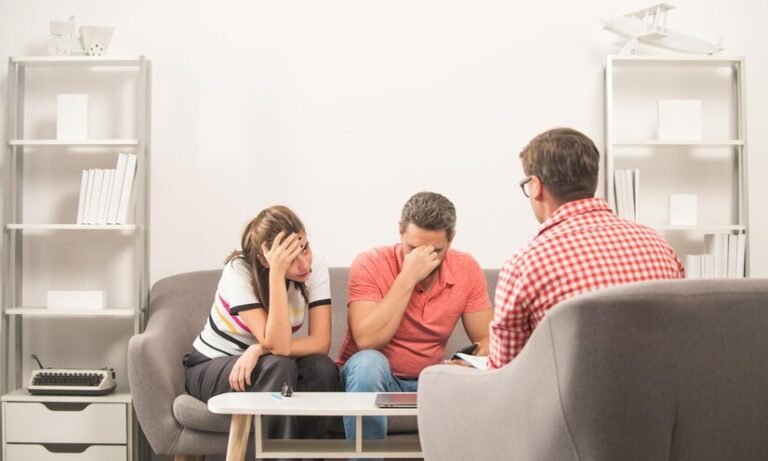Get Physical Therapy for a Sports Injury in Honolulu
Sports are a big part of life in Honolulu. From surfing and hiking to volleyball and running, staying active is part of the island lifestyle. But when a sports injury strikes, it can put your life — and your favorite activities — on pause. Whether it’s a sprained ankle, a pulled muscle, or a shoulder strain, physical therapy is one of the best ways to recover safely and quickly.
Think of physical therapy as your personal coach for healing — guiding your body to repair, strengthen, and return to full function. In this article, we’ll explore everything you need to know about getting Sports Injuries Treatment in Honolulu, how it works, what to expect, and why it’s essential for athletes and active people alike.
1. Understanding Sports Injuries
Sports injuries occur when you push your body beyond its limits or experience sudden trauma. They can affect muscles, joints, ligaments, or bones. Whether you’re a professional athlete or someone who jogs along the Waikiki shoreline, injuries can happen to anyone.
Acute injuries like fractures or sprains happen suddenly, while chronic injuries — such as tendonitis — develop over time from repetitive motion or strain.
2. Common Types of Sports Injuries
Here are a few of the most frequent sports injuries treated in Honolulu:
- Sprains and strains: Overstretching ligaments or muscles.
- Knee injuries: Torn ACL, meniscus tears, or runner’s knee.
- Shoulder injuries: Rotator cuff tears and dislocations.
- Tennis or golfer’s elbow: Inflammation caused by repetitive movements.
- Shin splints: Pain from overuse, especially in runners.
- Back injuries: From improper lifting or twisting.
Each of these conditions requires a unique treatment approach, and that’s where Sports Injuries Treatment Honolulu professionals come in.
3. Why Physical Therapy is Essential for Recovery
You might think resting is enough — but rest alone doesn’t heal muscles the right way. Physical therapy ensures your body heals stronger and avoids re-injury. It improves blood flow, increases flexibility, and restores balance.
Think of your body as a musical instrument — if one string goes out of tune (injury), the therapist helps you tune it back perfectly.
4. How Physical Therapy Helps in Healing
Physical therapy targets both pain relief and functional recovery. A therapist will assess your injury, design a personalized plan, and use techniques such as:
- Manual therapy (hands-on muscle manipulation)
- Stretching and strengthening exercises
- Balance and coordination training
- Heat or cold therapy
- Ultrasound and electrical stimulation
These treatments promote tissue repair, reduce inflammation, and help you regain mobility safely.
5. What to Expect During Sports Injury Treatment
Your first session typically begins with an evaluation. The therapist will discuss your injury history, lifestyle, and physical goals.
Then, they’ll create a tailored plan — focusing first on reducing pain and swelling, then gradually restoring strength and endurance.
As weeks pass, you’ll notice improvements not just in your injury, but in your overall performance too.
6. Personalized Rehabilitation Plans
Every athlete and injury is different. That’s why clinics offering Sports Injuries Treatment Honolulu develop customized rehabilitation plans.
These plans may include:
- Progressive exercise routines
- Mobility training
- Sports-specific drills
- Posture correction
This personalized approach ensures you recover at your own pace, minimizing risks of reinjury.
7. The Role of Physical Therapists in Sports Recovery
A physical therapist isn’t just someone who helps you stretch — they’re a key partner in your journey back to health.
They assess how your body moves, identify weaknesses, and teach you how to prevent future injuries. Their guidance helps athletes regain confidence and return to their sport stronger than before.
8. Preventing Future Sports Injuries
Once you recover, your therapist will focus on prevention strategies.
Here’s what that often includes:
- Warm-up and cool-down routines
- Proper technique and body mechanics
- Strength training for stability
- Flexibility exercises
Preventing future injuries is just as important as treating the current one.
9. Importance of Early Treatment
Delaying treatment can worsen your injury. Early physical therapy means faster healing and fewer long-term complications.
It’s like catching a small crack in your surfboard — fix it early, and you can keep riding the waves without worry.
10. Sports Injury Clinics in Honolulu
Honolulu offers several top-rated clinics specializing in Sports Injuries Treatment, equipped with advanced facilities and experienced therapists.
Some popular areas include:
- Downtown Honolulu
- Ala Moana
- Kaimuki
- Kapahulu
- Hawaii Kai
Many clinics also offer telehealth consultations, allowing you to start your recovery from the comfort of home.
11. Advanced Physical Therapy Techniques
Modern therapy clinics in Honolulu use innovative methods such as:
- Dry Needling: Reduces muscle tension and pain.
- Kinesio Taping: Supports joints during movement.
- Laser Therapy: Stimulates tissue repair.
- Hydrotherapy: Uses water resistance for gentle rehabilitation.
These advanced tools enhance traditional therapy and speed up healing.
12. The Benefits of Local Treatment in Honolulu
Choosing a local Honolulu clinic has its perks:
- Easy access to appointments.
- Cultural understanding — therapists familiar with Hawaii’s active lifestyle.
- Community connection — many clinics collaborate with local sports teams.
Plus, recovering near the ocean brings a calming, healing vibe that can boost your mental recovery.
13. Home Exercises and Lifestyle Adjustments
Your therapist will often recommend home-based exercises to maintain progress.
Simple stretches, resistance band workouts, and mobility drills can keep your muscles strong and flexible.
They may also advise lifestyle changes such as:
- Improving diet for joint health
- Staying hydrated
- Wearing proper footwear
- Maintaining correct posture during activities
Small daily habits make a big difference in your recovery journey.
14. Mental Health and Motivation During Recovery
Injury recovery isn’t just physical — it’s emotional too. It’s normal to feel frustrated or anxious when you can’t perform as usual.
Physical therapists often act as motivators, helping you stay positive and focused. Visualization, mindfulness, and celebrating small milestones can make your comeback smoother.
Remember, healing is not a race — it’s a process.
Conclusion
Getting Sports Injuries Treatment in Honolulu is about more than just healing an injury — it’s about reclaiming your active lifestyle with strength and confidence.
Physical therapy empowers your body to recover naturally, rebuild resilience, and prevent future injuries. So whether you’re a surfer, a weekend runner, or a yoga enthusiast, don’t let pain keep you sidelined. Seek help early, trust the process, and soon you’ll be back doing what you love most — moving freely under the Hawaiian sun.
FAQs
1. How soon should I start physical therapy after a sports injury?
You should begin physical therapy as soon as your doctor or therapist recommends — often within a few days after the injury to prevent stiffness and promote healing.
2. How long does it take to recover from a sports injury?
Recovery time varies depending on the injury’s severity. Minor strains may heal in weeks, while more serious injuries like ligament tears can take months.
3. Is physical therapy painful?
Some discomfort is normal as your body adjusts, but therapy should never cause sharp pain. Therapists work within your comfort level to ensure safe progress.
4. Can I do physical therapy at home?
Yes, your therapist will guide you through safe exercises to perform at home, but regular in-person sessions help monitor your progress accurately.
5. What is the cost of Sports Injuries Treatment in Honolulu?
Costs depend on the clinic, insurance coverage, and treatment plan. Many clinics in Honolulu accept major insurance and offer affordable packages for ongoing therapy.







